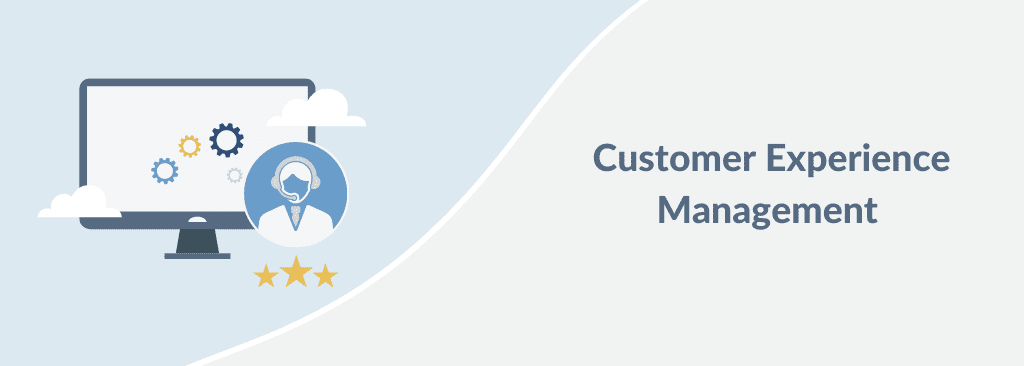Customer Experience Management (CXM) – What Is It, and Why Does It Matter?
Customer experience is how customers perceive their interactions with your company. It can be all customer interactions with your organization – advertising, promotions, website, packaging, product, service, features, ease-of-use, reliability, and customer service, among others.
A successful customer experience strategy has to be designed from the customer’s point of view with these three questions in mind:
- Is it useful?
- Is it usable?
- Is it enjoyable?
What is CXM?
Now, let us look at customer experience management (CXM).
Customer experience management is a system of processes, infrastructure, and strategies designed to improve customer interactions with the organization, thereby exceeding customer expectations and delighting them. CXM will help build customer satisfaction, loyalty, and advocacy.
The goal of customer experience management is to improve customer satisfaction by providing better service. This involves understanding the customer journey, figuring out where there are pain points, and then making changes to deliver a better experience.
Now that we have seen what it is let us look at why it matters.
Importance of Customer Experience Management
I used to work with a consultant who was referred to me by a friend. I asked the consultant about his marketing strategy in one of the initial conversations. He said he depends entirely on word of mouth and has no other strategy.
He provides personalized consulting services to his existing customers – they evangelize and refer him to their network. It has only helped him grow as an independent consultant.
Is this what we refer to as customer experience management (CXM)?
It is all about offering personalized experiences.
How Do You Go About Offering Personalized Experiences?
This consultant I referred to operated in a niche where he understood the experiences. With a little tweak here and there, he was able to offer laser-focused personalized experiences.
How do you go about doing this for a business that addresses a large set of customers?
It comes from extracting customer insight from all touch points and channels across your organization – website, chat, email, messenger, social, social mining, customer support & service interactions, helpdesks, events, sales, pre-sales, and marketing.
Assume that you have an integrated manner of extracting insights from your data.
Now, what do you do with those insights?
This is what you should do with insights.
- Create complete customer profiles
- Make it personal
- Deliver the right message at the right time.
Customer Experience Management Example
Earlier, it was all related only to demographic, transactional, and log data about customers. Today, you have access to unstructured data like social media and geolocations. With this available, you can definitely offer personalized experiences at every possible touch point.
Now, let us assume that you run the retail banking unit. One of your prospective customers visits your website. You have no information about this customer. So, you show the default page. Now, she clicks on your credit products but then decides to leave your site.
Now, you know that she is interested in your credit products. You also figured out while she was browsing your site she is an active member of a football franchise club.
You know her a little more the next time she visits your site. You show her your credit products with the football club-branded card popping up. She sees she would get six free tickets to their matches if she subscribes to that credit card.
This is how your personalization works when you deeply look at your customer profiles. Isn’t this customer experience management (CXM) at its best?
This example spoke about gaining a customer using CXM. However, customer experience management’s most important function is retaining your customers and gaining their loyalty.
Enhancing Customer Retention and Building Loyalty
Your customers want you to treat them well. Once they become your customers, they interact with your product, service, quality, service, and support teams. Some questions for you to look at include the following:
- How do you make them feel at each touch point?
- How easy is it for them to do business with you?
- What do you do with their feedback, especially the negative ones?
- How do you proactively reach out to them and discuss how they can do their business better with your offerings?
- How frequently do you have conversations with them?
- Do they feel heard? Do you acknowledge their challenges, reassure and resolve them?
With these, you can rest assured that your customer experience management is working overtime to achieve your objectives.
Why Is It Important?
Now that we understand the importance of customer experience management (CXM) let us look at what various industry survey data say.
Here are a few:
- 80% of customers feel that the experience is as important as the products and services (Salesforce)
- A bad customer experience can force 82% of consumers to stop doing business with you (Zendesk)
- If you are a leader in customer experience, your consumers are seven times more likely to buy from you, eight times more likely to try your other offerings, and 15 times more likely to speak in your favor to their network (Qualtrics)
- 85% of small businesses indicate that they earn their customers by word of mouth (Small Business Trends)
Every customer deserves an amazing experience. Every conversation you have with your customers is an opportunity to strengthen your relationship with them. Proactively reach out to your customers and ensure they get the best they could ever wish for at every touch point.
